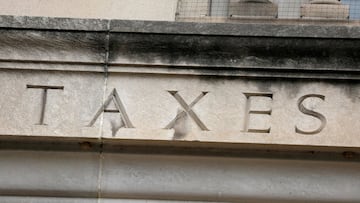Which US states don't have an income tax?
There are nine US states that do not require residents to pay taxes on their income. Which states are they and are there differences in the way they spend public money?

In the US, each state has the power to determine how it will generate revenue through taxation. Some states opt to forgo the collection of income or sales tax. The elimination of income tax at the state level, motivates some to move. However, governments must collect revenue one way or another, and if is not through income taxes, it may be through higher sales or property tax.
There are a total of nine states that do not tax income at the state level,
- Alaska
- Florida
- Nevada
- New Hampshire
- South Dakota
- Tennessee
- Texas
- Washington
- Wyoming.
When states pass a budget each year, they look at the income they have generated and the funds that will be allocated to them by the federal government. While residents in these nine states do not pay income taxes to the state, they do still have to pay the federal government.
According to the US Census Bureau, in 2019, the percent of revenue coming from the federal government was three percent larger on average in states with no income tax. For states with no income tax, the average was 29% while for those with income tax the average stood at 26%.
Many of the states that do not mandate income tax are smaller in terms of population. Alaska, New Hampshire, South Dakota, and Wyoming are all home to less than a million residents. With smaller populations, the state budget is often smaller as there are fewer people in need of government services.
However, just because many of these states are small does not mean they have not suffered from crippling budget deficits in recent years. In 2015, Alaska saw one of its largest budget deficits in years. In 1980 the state had eliminated state income tax, as it was able to generate enough revenue through the extraction and commercialization of oil. However, as many countries that depend on natural resources can attest, problems started when the price of oil began to fall. At the time of the crisis, the state saw a $4 billion budget deficit with the Commissionaire of the Alaska Department of Revenue saying that "for every $5 drop in oil prices, the state loses $120 million."
While efforts have been made to stabilize the state's budget and revenue, in 2019, thirty-five percent of the state’s revenue came from the federal government; almost ten points higher than the national average.
Of the nine states, Nevada, 23 percent, receives the least percent of its revenue from the federal government, while Wyoming at 37% receives the most.
Do states without income tax spend their money in a different way than those that do?
As far as the most important expenditures for states, education, public welfare, health, infrastructure, and law enforcement, there are a few ways spending differs.
Comparison: State Income Tax VS No State Income Tax, by spending category
States with state income tax |
States without state income tax |
National average | |
Education | 30.14% |
30.46% |
30.3% |
Public Welfare | 27.9% |
25% |
26.48% |
Hospitals and Health Care | 6.2% |
4.9% |
5.5% |
Highways | 6.4% |
7.9% |
7.15% |
Police and Corrections | 3% |
3.1% |
3% |
Natural Resources and Parks and Recreation | 1.6% |
2.2% |
1.9% |
Government Administration | 3.4% |
3.9% |
3.6% |
The only areas where states without income tax allocate more funding than states that do, and that national average, are highways, natural resources and parks and recreation, and government administration. They spend about a tenth of a percent more on education and police and corrections, but this does not represent a significant difference.
Health Care
Across the board, these states spend less on public welfare programs and for health care. Money Rates, an online financial news outlet, published an article in January of this year outlining which states had the best and worst health care systems. Of states with the best systems, New Hampshire made the list for its high child vaccination rate.
On the list of states with the worst systems, three states, Alaska, Texas, and Nevada were ranked in the bottom ten. Their low ranking mainly relates to doctor and nurse shortages that strain hospital systems and leave patients vulnerable. Texas was also ranked low because it has the highest rate of uninsured residents of any state. The Lone Star state spends more money maintaining their highway than they do on health care services and hospitals combined, which could be part of the reason the quality of its health care system has been ranked so poorly.
Additionally, reported that When U.S. News and World Report ranked the top ten states with the best health care, Washington was the only state that did not tax income that made the list. Washington spent more than eleven percent on hospitals and health care services in 2019, double the national average.






